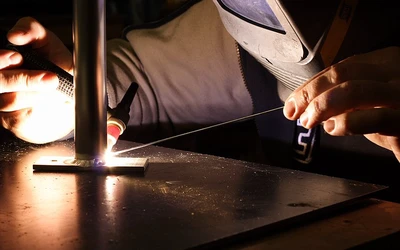
Recognizing Patterns in Atomic Chess: Part 1
Much of atomic can be boiled down to one part of the game: openings. But are openings really all about memorizing lines to unfathomable lengths, or, much like standard chess, are there patterns in atomic that can help us understand what is truly happening in the opening?When is b4 Useful?
Let's start with my favorite opening: The Farmer's Gambit
After 1. e3 e6, there are at least twelve moves that are more common than 2. b4. In addition to this, the computer considers this move quite dubious and punishable. Hence, I am not going to endorse 2. b4 as a good move. I will, however, give five opening principles that this move accomplishes.
1. Preparing Bb2
Since we had played 1. e3, it seemed as if it was going to take at least three moves to get our dark-squared bishop out. However, pushing our b-pawn allows us to get our bishop out in just two moves, and puts it on a very nice diagonal, coming with the immediate threat of Bxg7 to wreck black's kingside.
2. Stopping Bb4
In standard chess, mate in one threats are very powerful. In atomic chess, "exploding king" threats are even more powerful: a move that can be made even if you're in check. For instance, after black plays Bb4, the attack on d2 is an "exploding king" threat, and gives black a very crucial tempo while you defend it. In many lines, this is quite important, as a white queen on f3 or rook on f1 may be attacking the f8 bishop, but there is no time for black to make an "exploding king" threat with the pawn on b4.
3. Stopping Qa5
For the same reasons listed above, b4 also stops the queen from coming out to a5, which is a common maneuver in atomic.
4. Preparing Bd3
Now that black's bishop can no longer come out to b4, the threat of Bd3 is one that needs to be taken seriously. Bd3 is a good threat in a lot of 1. e3 e6 lines, but it should be feared even more now.
5. Starting the queenside pawn storm
Just like in standard chess, space, particularly when obtained with pawns, is a big advantage in atomic chess. Pawns are actually quite a lot better at obtaining space in atomic, since they are harder to remove. The queenside pawn storm will often immobilize black's pieces, including black's own queenside bishop that they were planning to fianchetto.
Let's quickly look at an example game where these principles are used.
So while sure, b4 is not the best move according to humans or computers, if we understand the ideas and concepts behind it, the move turns from a dubious move into a powerful one. The patterns that can be recognized here can also be used in other openings where we may want to stop our opponent's queen from getting to a5, prepare our bishop to get out to d3, or accomplish any of the other goals listed above.
This is just part one of the series. I have other studies lined up and would love to hear feedback from you on which patterns in atomic you would like to dive into next!
You may also like
 CM HGabor
CM HGaborHow titled players lie to you
This post is a word of warning for the average club player. As the chess world is becoming increasin… thibault
thibaultHow I started building Lichess
I get this question sometimes. How did you decide to make a chess server? The truth is, I didn't. Dell_Iris
Dell_Iris